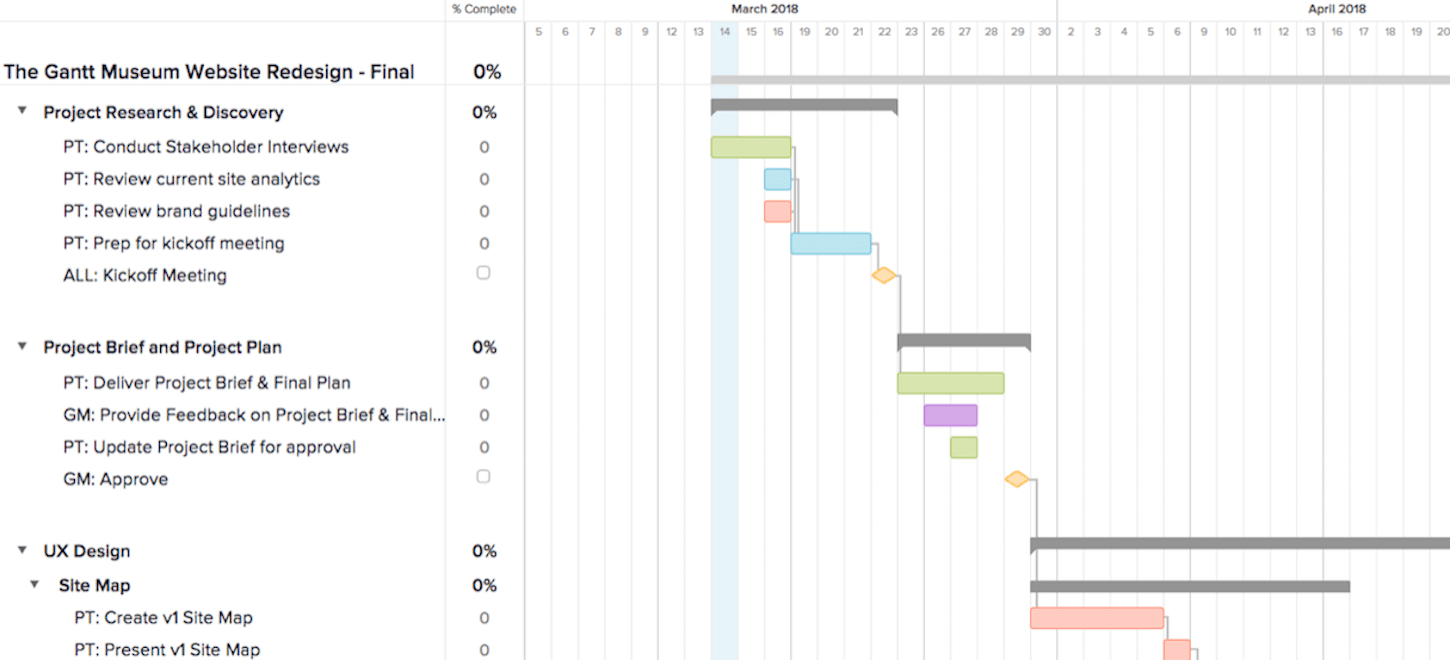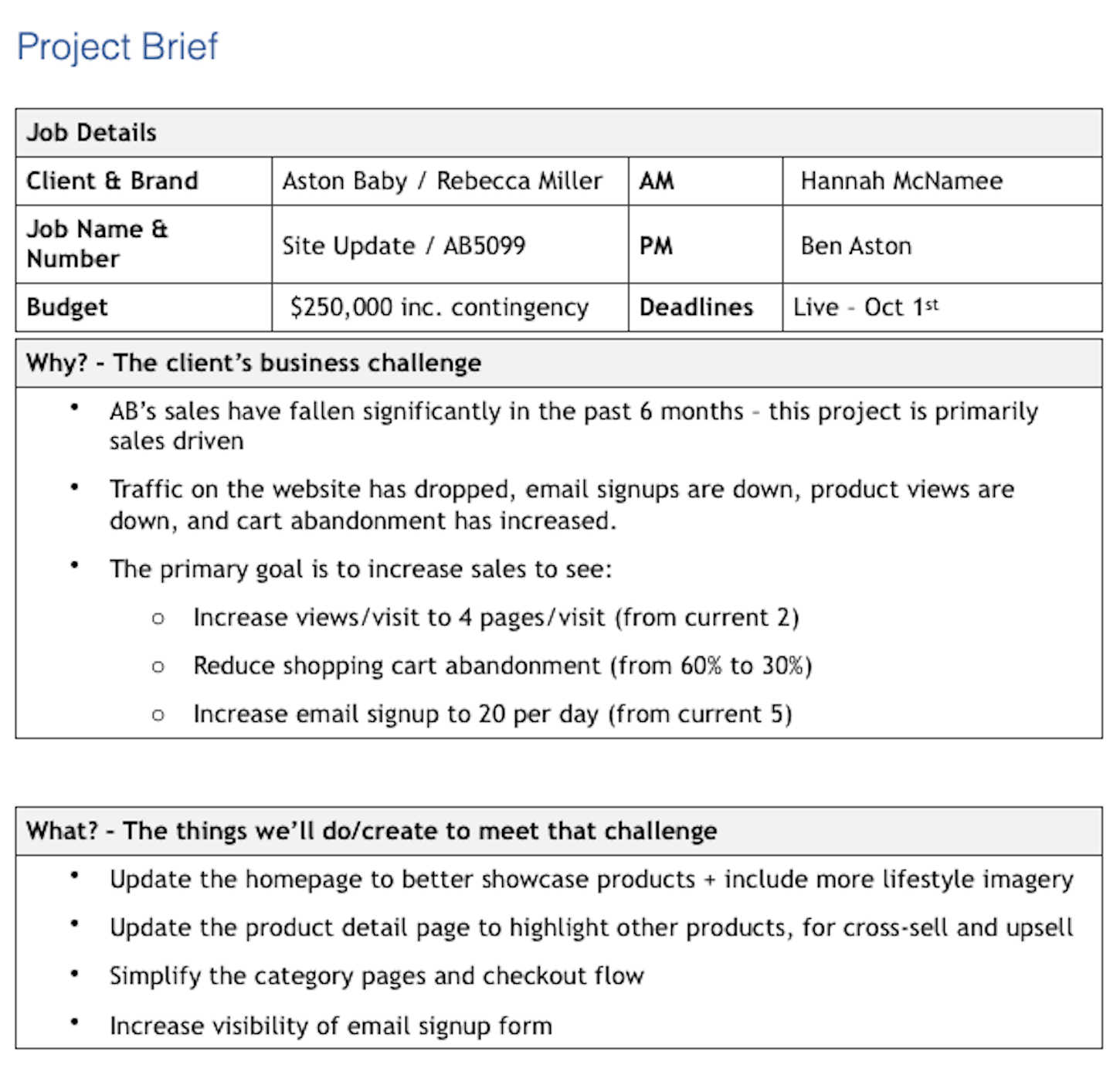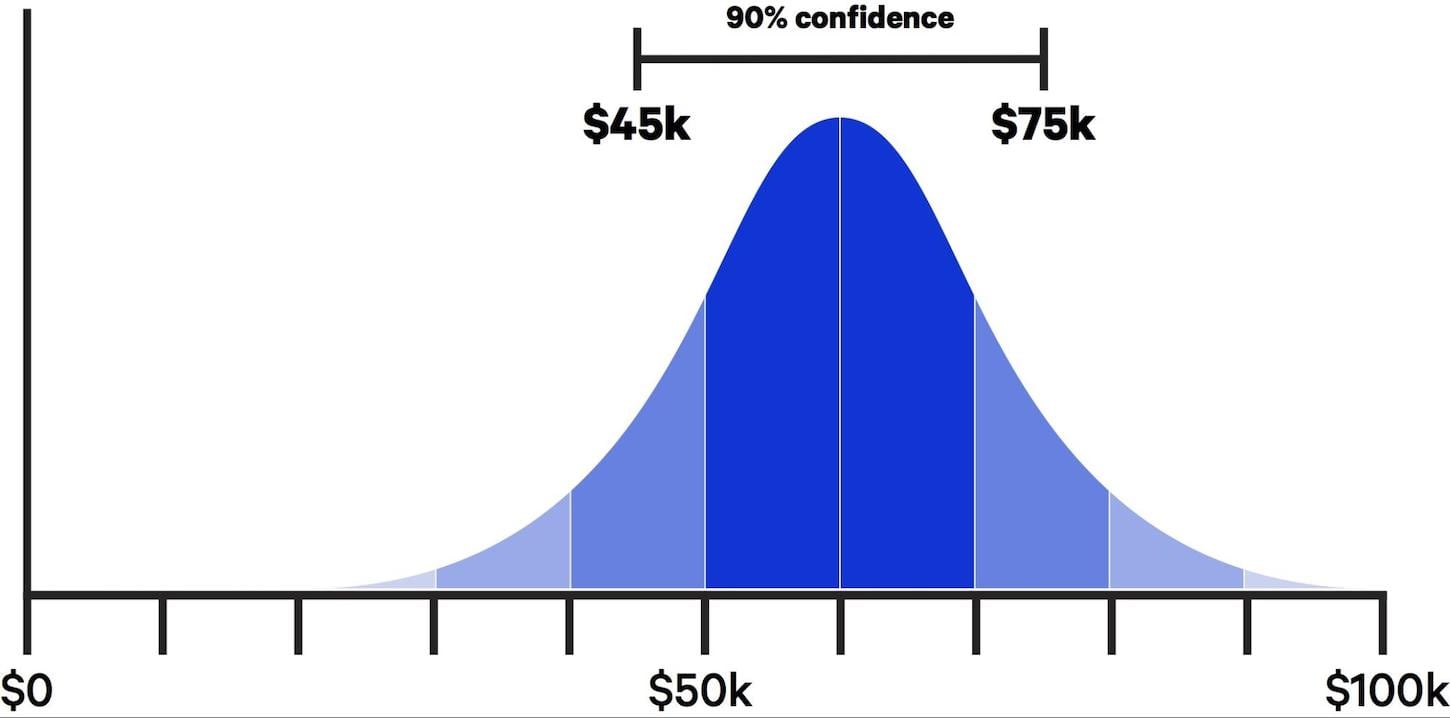Digital project management is a critical discipline. As projects juggle tight budgets and deadlines and the involvement of various stakeholders, project managers ensure a streamlined process from concept to completion. Project managers also bear the burden of the success or failure of a project, so it’s important to follow best practices, which can have a significant impact on the workflow as well as the final product.
For this article, we quizzed seven leading digital project managers about the best practices that they think are key to the success of a project.
Here’s what they recommend.
1. Identify the right stakeholders
For a project to be successful, it’s essential to get the right people in the room from the start. To achieve this, freelance digital strategist Lynn Winter says it’s important to have a direct conversation about responsibilities and time commitment.
“While there are a variety of roles that need to be filled on the client side—decision makers, content creators, project managers,” she explains, “the first decision is determining who should be part of the core team and who’s not: what I consider the inner and outer stakeholder groups.”
The inner group
This group should be three to seven people. “If it’s too big, it’s hard to be nimble and make decisions,” Lynn warns. “If the group is too small, you are likely missing important voices.”
This group is required to attend every key project meeting as well as complete homework. They also need to be invested in the vision of the whole company instead of pushing their own agenda.
The outer group
The outer group should include people that have a stake in a portion of the project, offer an important perspective, or are higher up in the company. This group can be larger but should max out around 10 to 15 people.
“Their ideas may guide some decisions but they will not change the direction the project is already heading in,” Lynn clarifies. “To keep this group engaged and informed, meet with them every three weeks for one to two hours to share your progress. Having regular communication reduces frustration which builds when people feel they are in the dark about decisions. This is also a great group to engage with when doing stakeholder interviews and user testing.”
The key to this process is to have people self-select their group, Lynn advises. If they choose their own level of responsibility and voice in the project, issues with internal politics and decision-making dissipate.
You might also like: Leading Successful Discovery Sessions: Set the Stage for Client Projects.
2. Assess the project early on
Having your own house in order as a project manager is one of the key tricks to success of any project, finds Vicky Walsh, Head of Projects at CPL Online.
“At any one stage hundreds of requests can be flying towards you,” she says. “Whether it’s scope creep, or a last minute complete rebrand on the whole site—and we as project managers need to remain as calm and serene as possible.”
“Simply take a step back early on in your project and assess the level of your stakeholders or team, the technical challenges of the project, and ultimately if it’s in your comfort zone. That wayyou can truly understand the time it’s going to take you as the project manager and ensure that you don’t over-commit yourself and your precious time to something you realistically couldn’t deliver from a management point of view. After all project managers deliver a service too!”
Vicky suggests a simple point-scoring system, which she calls ‘project points’, that is broken down into three areas:
- Stakeholders: How on board are they with the project, and what is their technical understanding? Do they require detail?
- Complexity: Is this something that’s been done before, or is it groundbreaking, never-been-done before technology?
- Technicality: Is it a known within the remit of your technical team?
Then, for each of these areas, factor a score of one to three (one being engaged, easy and confident, and three being challenging). You can also add in a special bonus point for those with particularly frustrating challenges.
“You may end up with easy peasy projects with stakeholders from hell,” Vicky concludes. “ By understanding this early on, you’ll be armed with knowing how much and in what areas your precious project manager time will be used!”
You might also like: The Web Designer’s Guide to Client Onboarding.
3. Create a project plan
According to Brett Harned, Director of Education at TeamGantt and founder of the Digital PM Summit, project plans are one of the most important documents created on any project.
“They can serve as a critical form of communication not only about timing, but responsibility, scope, and process,” Brett explains. “If handled properly, a plan can also help you to align your team and stakeholders around all of those things. Many project managers like to jump straight into a tool, but I always recommend that you start rough by sketching out your ideas for how a project could work and then take it to your team to discuss. When you use a sketch or an informal idea to generate a discussion about how you’ll work together, it provides an opportunity for the people who will be executing the work to help craft the process around it. That generates team buy-in and accountability, which can sometimes be difficult to uncover in projects.”
Many project managers like to jump straight into a tool, but I always recommend that you start rough by sketching out your ideas for how a project could work and then take it to your team to discuss.
When you turn that sketch and subsequent discussion into a fully formalized plan in the tool of your choosing, Brett recommends making it easy to read for your team and stakeholders.
“Break your work down into phases, or groups of tasks that are easy to digest,” he advises. “And don’t be afraid to include even the smallest tasks just to ensure they are not skipped. Then, assign people to tasks to be sure that everyone is clear on responsibilities as well as deadlines. As your project progresses, check in on your plan and make updates to that progress, so that everyone—your team and stakeholders included—have a clear picture of where the project is at that moment. And let everyone know that plans change often, so you’ll be tasked with keeping it up to date and reporting on any potential risks or issues that arise.”

4. Write a clear, complete design brief
Ben Aston, founder of the The Digital Project Manager blog, has learned that writing a clear, complete brief to guide your team is a major step in building the right product in a design project.
To make your briefs useful for your creative teams, Ben recommends they should include:
-
A profile of the client: Name, industry, lines, USP, mission, values, competitors, messaging, key stakeholders, and contacts.
-
An overview of the project: As much background as possible about the "what" of the project. For example, client expectations, any similar projects they've previously done, and whether it's a new build or a redesign. This should also include the project objectives, written in plain language describing the concrete, measurable outcomes for the project.
-
An overview of the audience: Any information about the target users of the project your team will be working on, such as demographics or data on their media consumption habits.
-
Design requirements: Specific information about pre existing brand assets, dimensions, file formats, folder structures, colors, documents, brand guidelines, mockups, mood boards, etc.
- Budget and schedule: Don't keep this information just for the management or client services team. Make sure you provide information such as deadlines, milestones, and completion dates for concepts and reviews with your design teams so they can use it to make the right decisions as they work.
You can use something as simple as a word document to write design briefs, but if you're using project management software designed for creatives (marketing agencies, design studios, etc), you can take advantage of the briefing templates and client-facing forms often provided by those tools.
“Whatever you use, putting in the extra hours to give your teams a complete, specific brief from the get-go can save hours of time in the review process down the road,” Ben points out.

5. Follow agile principles
Gone are the days when designers worked in silos and just threw beautiful crafted mock-ups over the wall to the developers after the final client sign-off. Carson Pierce, Project Manager at content-first design and development company Yellow Pencil, swears by an approach based largely on agile principles, which he says is much more effective but way harder to define and implement.
It involves two main shifts in philosophy:
- Value responding to change over following a plan. Everyone needs to embrace the idea that if changing some element of the design—even late in the process—makes the final output better, we should be doing it.
- Think more in terms of cross-functional teams. This doesn’t mean that everyone is a designer and that designers should code, but design shouldn’t happen in isolation. It should be interconnected with other practice areas (content strategy, development, etc.)—as well as with the client—throughout the entire project.
“This change in mindset has a dramatic effect on where designers fit into the overall process,” Carson explains. “They should be heavily involved right from the start, fully engaged in and helping to guide the discovery phase. Discovery without design is hollow and missing the heart.”
Discovery without design is hollow and missing the heart.
In the same way that designers will be involved in the broader process, those from other disciplines will now be more involved in design.
“Once the designer takes the lead,” Carson says, “they will need to be more transparent with their thinking and outputs; inviting others—developers, clients, etc.—to provide frequent feedback through the process. Finally, designers also need to be available throughout the build phase as questions arise or to deal with the inevitable changes that an agile approach encourages. This integrated team approach and adaptability to change will inevitably lead to better final products.”
Be prepared to invest more in resources
Carson admits that all of this can complicate matters on the project management side of things. For example, how we address resourcing changes dramatically. More people will be involved at each stage, and each person will be involved in the project for a longer span.
“In turn, this may also mean estimates will need to increase to cover this extra time,” Carson points out. “I’d like to say that the agile approach will save money in the end, but that’s not always the case. Sometimes better outputs just cost more.”
Put the client in charge
Carson also recommends finding new ways to control scope while embracing change.
“There are several ways to approach this, but wherever possible it’s best to put control in the hands of the client,” he advises. “Involve them at every step, then let them prioritize the work and make decisions about the final product—while clearly communicating that each decision may have impacts on the schedule and budget. You’ll be surprised with how willing clients are to wait longer or pay more when they’re the ones calling the shots.”
The keys to making this all work, Carson suggests, are setting expectations around change management and frequent check-ins with the entire team—including the client. It’s why most agile methodologies have daily standups. If the client is not be familiar with this way of working, you’ll need to provide extra guidance to make everything go smoothly.
You might also like: Should Your Agency Adopt an Agile Process?
6. Create a neutral environment
When you’re working directly with designers, it’s vital to create a neutral environment, advises Rachel Gertz, Digital Project Manager Trainer and co-founder of studio Louder Than Ten.
“Here you can openly discuss how some design approaches support your project in meeting its goals and others don’t,” she explains. “For example, custom graphics for a simple brochure is probably overkill and will tank your scope, but saying this to your designer might go over like lead if they want to bring their best to the project. Often, when we get too close to our design, it’s hard to disentangle ourselves from the emotional tension of making changes, so as project leads, we can really support the design process by helping our designers own the scope instead of us enforcing it.”
As project leads, we can really support the design process by helping our designers own the scope instead of us enforcing it.
To do this, Rachel suggests sitting down with your designers and have them flesh out the most and least complex way they could approach their task (for example, a 3D animation will likely take longer than a custom illustration, which is probably more complex than choosing a series of stock photos).
Then tie this scope spectrum to a budget range by having designers run through a 90 percent confidence estimate.
“This is an estimation practice where they can say—with confidence—that a task falls within a given money or time range nine times out of ten,” Rachel explains. “This helps them intuitively know when to simplify and pull back, and when they can go hog wild on design without you criticizing.”
“When you empower your designers to understand the impact of a design change on the timeline and budget, it neutralizes the feedback environment so your designer can focus on creating the right thing—and you can let go and trust the process.”

7. Be honest with your clients
For Sam Barnes, Engineering Manager at British retailer Marks and Spencer, the most powerful thing anyone managing projects can do is to always be honest with your clients.
“People tend to hide problems from clients or sugar coat things, believing that this will foster a more positive relationship than telling the truth, when in reality it almost always comes back to bite them in a negative way,” he cautions.
Typically, something goes wrong on a project and the timeline or budget is in jeopardy due to mistakes on the production or client side. Project managers often don’t mention this to the client, because they fear it will rock the client’s confidence in their ability to deliver. It just feels natural not to raise it and hope things turn out okay or to mention it but dilute the impact it has.
“Often the time or budget can’t be salvaged, however,” Sam warns. “Later in the project, the client hears the bad news, which by then is compounded by other previously hidden issues. The client justifiable wonders why these are only coming to light then, which damages their trust in you.”
Being honest may not always be a pleasant experience but it always maintains your most valuable assets for the long-term: a reputation of trust and integrity with clients.
"Being honest may not always be a pleasant experience but it always maintains your most valuable assets for the long-term: a reputation of trust and integrity with clients."
You might also like: 4 Quick Ways to Build Trust With a New Client.
The road to project success
What all of the above tips have in common is to be well-prepared from the beginning—before you start any digital project. If you invest in being organized and also create some useful documents, you’ll reap the fruits later on. Effective and regular communication, collaboration, clarity, transparency, openness, and honesty are the keys to a successful project. They will help you get buy-in and establish trust and accountability among stakeholders while minimizing frustrations, and ensure that you, as the project manager, can remain as calm as possible.
Read more
What are your best tips for digital project management? Share your expertise in the comments below!



